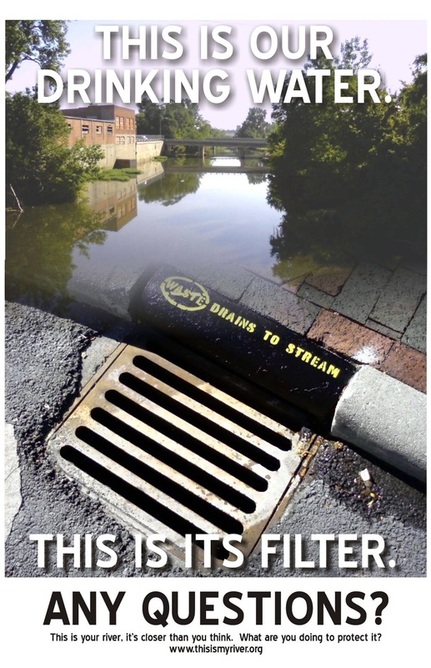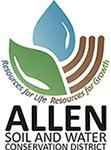Stormwater
What Is Stormwater?
- Stormwater Runoff is the water following a precipitation event that flows off impervious surfaces and cannot be absorbed by the soil.
- Precipitation is any form of water that falls to the earth’s surface. This includes rain, snow, hail, and freezing rain or sleet. Annual precipitation for the City of Lima is 36-40 inches.
- Impervious Surface is any surface that does not allow precipitation to pass through. Some examples of these hard surfaces in our community include rooftops, driveways, patios, sidewalks, streets, and, parking lots whether paved or compacted gravel.
- Pollution Connection: The majority of pollution in our rivers and streams is carried there by runoff. As this water moves across the surfaces of our community, it picks up everything lying loose such as oil, antifreeze, pet waste, litter, fertilizers, pesticides and soil particle
The City of Lima is working to reduce stormwater runoff.
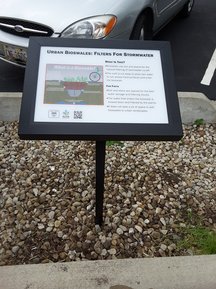 Almost 40% of Lima is covered with impervious or water-resistant surfaces such as roof tops, driveways, streets, sidewalks, and parking lots. These surfaces decrease the area of land that can absorb and filter rain water. This creates more stormwater runoff, which carries pollutants through the storm sewer system and into the river.
Almost 40% of Lima is covered with impervious or water-resistant surfaces such as roof tops, driveways, streets, sidewalks, and parking lots. These surfaces decrease the area of land that can absorb and filter rain water. This creates more stormwater runoff, which carries pollutants through the storm sewer system and into the river.
The City of Lima’s Stormwater Department has been working to implement practices which reduce and filter stormwater runoff. The Allen Soil and water Conservation District and the City of Lima have put signs up in front of seven different locations. The signs highlight and explain different practices which work to reduce the amount of stormwater runoff. They allow our landscape to act more like a sponge, absorbing and filtering rain water before it reaches the stream. By using practices like these, Lima will continue to improve the health of the Ottawa River.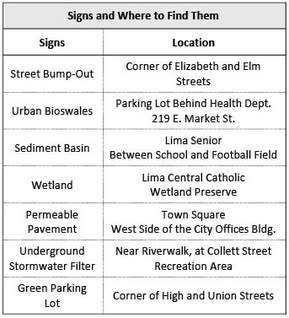
Get outside, check out the signs and see the practices for yourself. The seven different signs and locations are listed in the table to the right. You can also view a map of the locations here. When you make it to a sign, scan the QR code to learn more!
Don’t have time to go find all the signs? That’s okay, you can see all the sign images and learn more about each practice by clicking here.
Five Things You Can Do That Will Make a Difference
- Keep yard waste from entering the street and catch basins.
– Blow grass clippings and leaves into the yard or sweep them up. - Inspect catch basins in your neighborhood regularly. Keep them free from trash and debris.
- Prevent your car from leaving oil and other deposits on paved surfaces. Check your car for leaks and recycle motor oil.
- Direct outdoor wash water onto grassy areas. When washing your car, house, sidewalk, driveway or other hard surface never let soaps, cleaners, and sediments enter the storm drain.
- Prevent pet waste from entering storm drains. Proper ways to dispose of pet waste are to bury it, throw it away, or flush it down the toilet.
Watershed Watch is a volunteer effort where citizens can get involved in projects and activities that reduce stormwater impacts and protect the Ottawa River. Marking storm drains, monitoring streams, participating in river cleanups, conducting community education programs, and being on the lookout for potential pollution are good ways for people to take an active role in protecting an important community resource.
To get involved in the Watershed Watch program contact the Allen Soil and Water Conservation District.
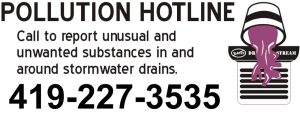
Stormwater Resources:
City of Lima Stormwater Utility Website
Ohio EPA
